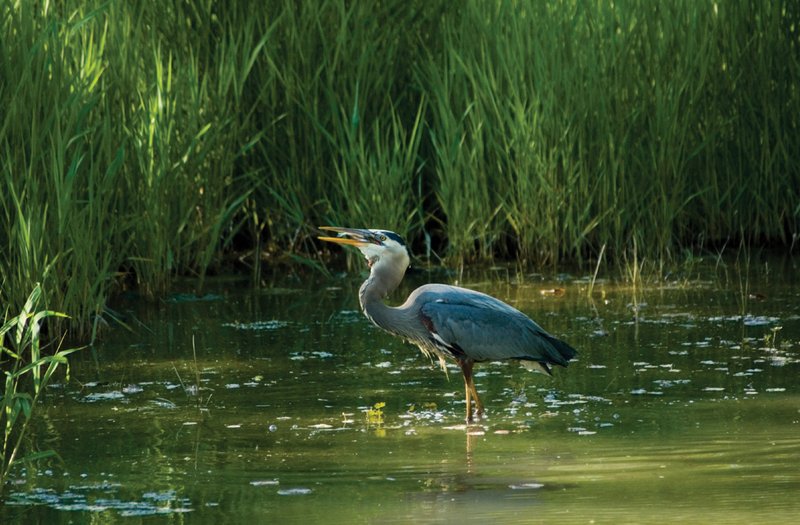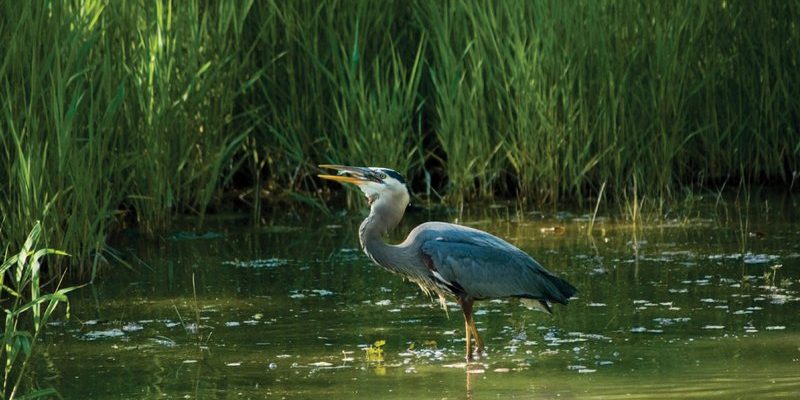
Imagine trying to navigate life where the rules constantly change. That’s what herons do! Every day is a new challenge, and they have to adjust their hunting tactics, nesting habits, and social behaviors based on their surroundings. Let me explain how these remarkable birds manage to survive and even thrive in diverse habitats.
Physical Adaptations of Herons
One of the standout features of herons is their physical adaptations. Their long legs help them wade through shallow waters, keeping them steady while they scan for fish. It’s like having a built-in tall stool that allows them to see better! Their long necks and sharp beaks are designed for quick strikes, making it easy to catch slippery fish.
The color of their feathers also plays a crucial role. Many herons have a blend of gray, blue, and white feathers that not only provide camouflage amid reeds and water but also help regulate body temperature. When it’s hot out, their lighter feathers reflect sunlight, keeping them cool. Isn’t nature smart?
Moreover, their wings are broad and strong, allowing for powerful, graceful flight. This ability is essential, as herons often have to travel long distances for food, especially when local resources diminish. With such impressive wing spans, it’s no wonder they glide through the air with such elegance!
Behavioral Adaptations
Beyond physical traits, the behavior of herons showcases their adaptability as well. Have you ever noticed how they can stand perfectly still for long periods? This patience is key to their hunting strategy. By remaining motionless, herons can blend into their surroundings, becoming less noticeable to prey. When a fish swims by, they strike with incredible speed.
Herons are also opportunistic feeders. They eat a variety of prey, including fish, frogs, and even small mammals, depending on what’s available. This flexibility in diet allows them to thrive in diverse environments. If one food source is scarce, they can easily switch to another. It’s like having a varied menu at a restaurant; if your favorite dish isn’t available, you have plenty of other options to choose from.
Additionally, herons are social birds. They often nest in colonies, which helps them protect their young from predators. This teamwork in nesting and raising their chicks shows a different kind of adaptation, as being part of a community can provide safety and support.
Habitat Choices
Herons can be found in a wide range of habitats, from wetlands and rivers to coastal areas. This adaptability to different environments is vital for their survival. The availability of food and safe nesting sites greatly influences where they choose to live.
In freshwater areas, herons often hunt in shallow waters, where they can easily spot fish. Here, they rely on the lush vegetation, like reeds and rushes, to camouflage themselves. In contrast, coastal herons have to adapt to changing tides and saltwater conditions. They’ve learned to hunt not just in the water but also along the shore, taking advantage of the diverse marine life.
Even the climate plays a role in their habitat choices. Some herons migrate seasonally to follow warmer weather and available food. You might be wondering how they know when it’s time to leave. It’s all about instinct and a keen awareness of environmental cues, like changing temperatures and daylight hours.
Nesting and Reproduction
When it comes to raising their young, herons exhibit fascinating adaptations in their nesting habits. They often build their nests in tall trees or reeds, which helps protect their chicks from ground predators. These elevated nests provide a safe haven where the young can grow up, free from danger.
Herons are also known for their strong parental instincts. Both parents take turns caring for the chicks, ensuring they receive enough food and protection. This shared responsibility highlights their adaptability in nurturing their young in a sometimes harsh environment. When the chicks are old enough, they learn to fish by imitating their parents, gaining the skills they need to survive.
Interestingly, herons will often return to the same nesting site year after year, which shows how well they know their territory. It’s like visiting your favorite childhood park; there’s comfort and familiarity in those places.
Impact of Climate Change
As climate change reshapes our world, herons are facing new challenges. Their habitats are changing, and food sources can become less predictable. For example, rising water levels can alter wetlands, affecting where fish are found and how easily herons can hunt.
Some heron species are also experiencing shifts in their migratory patterns. Changes in temperature can lead to mismatches between breeding and food availability, putting stress on their reproductive success. This means that while herons have amazing adaptations, they’re not immune to the effects of a changing environment.
Conservation efforts are essential for ensuring the survival of these remarkable birds. Protecting their habitats helps maintain the rich ecosystems they rely on. Every little bit counts, so supporting local conservation initiatives can make a significant difference.
Herons are truly remarkable birds that have adapted in many ways to survive and thrive in different environments. With their unique physical traits, clever hunting strategies, and strong social behaviors, they showcase the wonders of nature’s adaptability. From their elegant flight to their patient hunting, herons remind us of the delicate balance within ecosystems.
The next time you’re near a waterway, take a moment to appreciate these incredible creatures. Watching them stand still, poised for a catch, is a reminder of how life constantly evolves. Just like us, they’re always navigating the challenges of their surroundings—one elegant step at a time.

